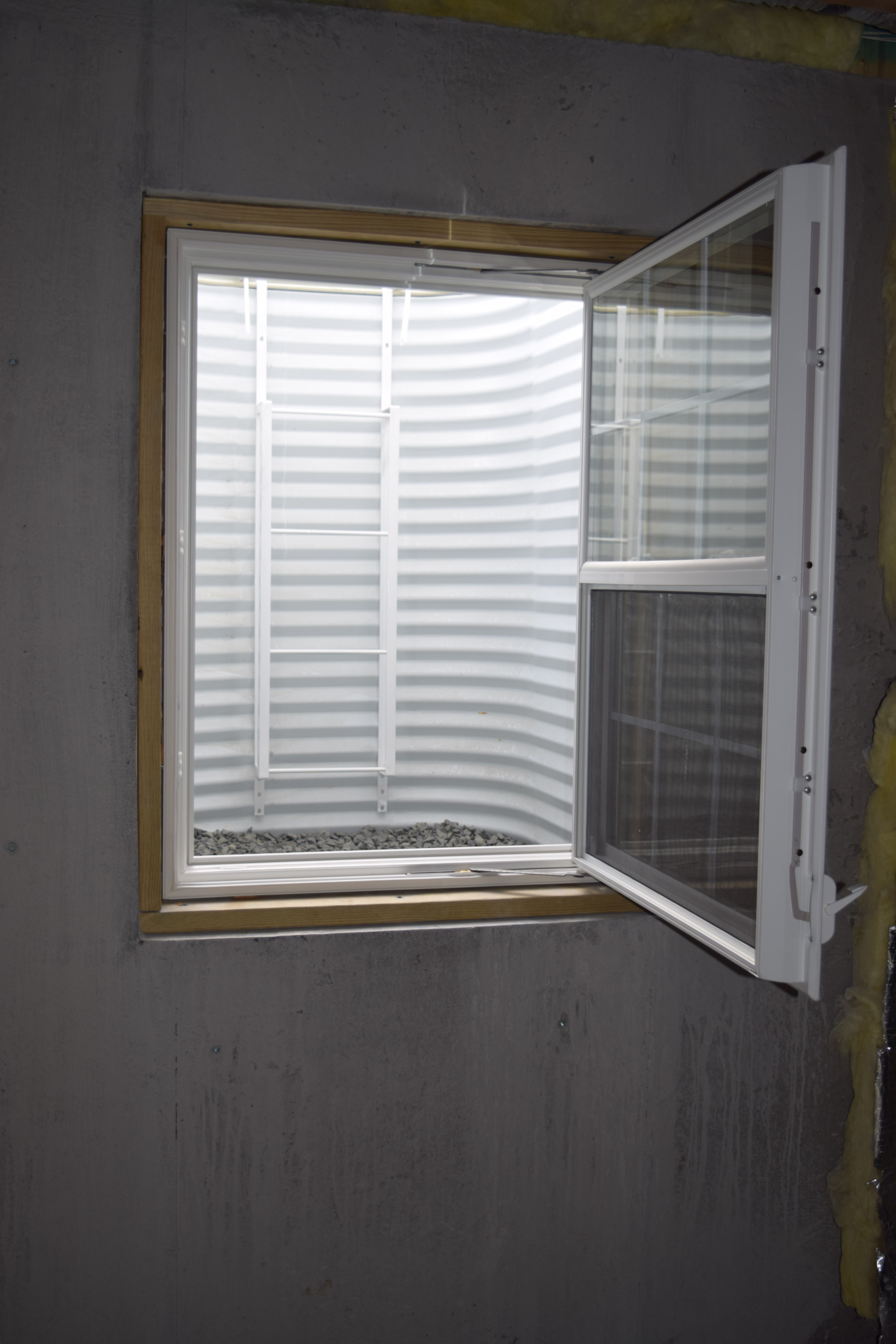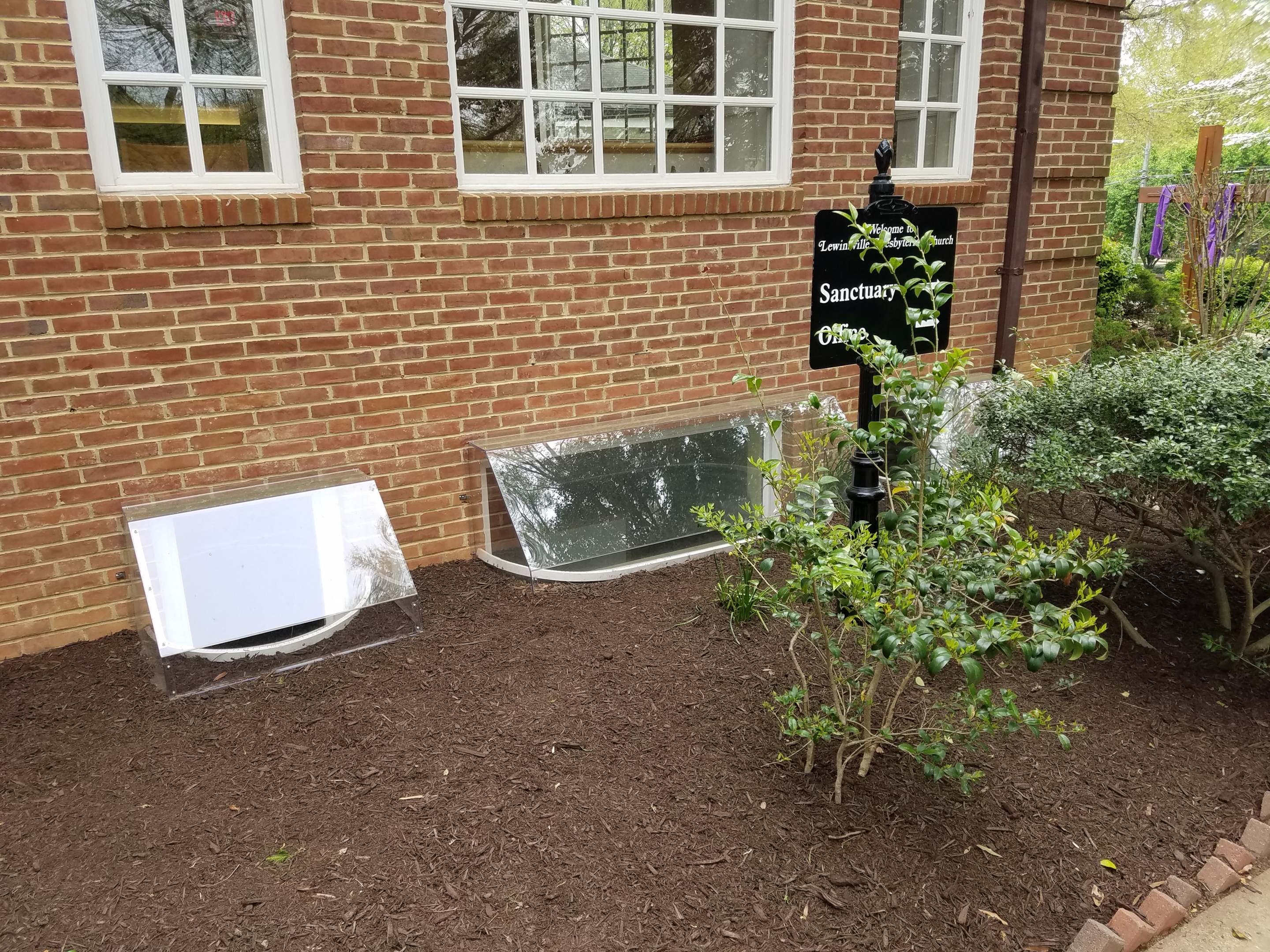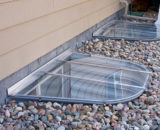Egress Window Code Washington State
In Washington State, egress windows must meet International Residential Code (IRC) standards in order to be legally compliant. This includes a minimum opening size of 5.7 square feet and a maximum sill height of 44 inches from the floor. Additionally, these windows must have operable parts that allow for easy escape in the event of an emergency. In some cases, such as basements with low ceilings, it may be necessary to install ladders or other devices to ensure safe exit through the window.
It is important to note that not all windows qualify as egress windows; bay and bow windows do not typically meet IRC standards due to their limited space or lack of a clear path out of the window. If you are unsure if your window meets the requirements, it is best to contact a local building inspector for confirmation.
Finally, when installing egress windows, always be sure to use qualified and experienced contractors who are familiar with the IRC guidelines. When installed correctly, egress windows provide an essential measure of safety for you and your family in case of an emergency.

Egress window vs basement egress window code in Washington State
In Washington State, there are two types of egress windows that must comply with building codes – egress windows and basement egress windows. Egress windows are typically installed on the first or second floors of a home for emergency escape or rescue purposes. Basement egress windows provide an emergency exit from below grade habitable spaces like basements.
Does a bedroom have to have a window Washington State?
Yes, all bedrooms in Washington State must have an egress window or door as defined by the state’s Building Code Council. According to Section R310 of the code, each sleeping room must have a minimum clear opening of 5.7 square feet for sleeping purposes. This opening must be no less than 24 inches high and 20 inches wide and should not be more than 44 inches above the floor. The window must also provide a means of escape in case of an emergency, allow for natural light, and be easily opened from the inside without any keys or tools. Additionally, if the window is installed higher than 44” off the floor, a ladder or other permanent structure must be provided to allow for safe escape.
It is important to note that these requirements apply not only to bedrooms, but also other habitable rooms such as living areas and dens. To ensure compliance with state code, it is best to consult a local building inspector for specific installation instructions. Additionally, in the event of an emergency or if the window cannot be opened due to any reason, ensure that an alternative means of escape is always available. Following these guidelines will help to ensure the safety of your family and comply with egress window code in Washington State.

Seattle building codes
The local building codes affecting emergency rescue require the addition of a window to the basement, an open loft and a bedroom. This window has to meet a set of code requirements - SRC R3110 and:
1. It must be at least 5.7 square feet in size and open to the outside.
2. The sill of the window can’t be higher than 44 inches from the floor level inside the structure.
3. The window needs to have operable parts to allow for easy escape in case if an emergency situation arises.
4. In some cases, it might be necessary to install ladders or other devices to make sure that anyone could get out through a window safely even if there is a low ceiling height in basement area beneath the window opening itself.
5. Not all windows qualify as egress windows, bay and bow windows being excluded due to their limited space or lack of a clear path out of the window.
6. It is highly recommended to contact a building inspector if you are uncertain whether your window meets the egress requirement or not.
7. It is important to hire experienced contractors who have knowledge about the IRC guidelines and can install egress windows properly for providing safety to family in case of emergency.
It is essential that all homeowners ensure their home’s emergency escape measures meet these requirements and any other Seattle city codes, as failure to do so could result in serious legal consequences. With proper planning and installation, egress windows can be an invaluable asset both for providing peace of mind and added security for your home in case of emergency situations.
SECTION R310 – EMERGENCY ESCAPE AND RESCUE OPENINGS FOR WASHINGTON STATE
R310.1 Emergency escape and rescue opening required.
Basements, habitable attics, and every sleeping room shall have not less than one operable emergency escape and rescue opening. Where basements contain one or more sleeping rooms, an emergency escape and rescue opening shall be required in each sleeping room. Emergency escape and rescue openings shall open directly into a public way or to a yard or court, providing an unobstructed path with a width of not less than 36 inches (914 mm) that opens to a public way.
Exceptions: Storm shelters and basements used only to house mechanical equipment not exceeding a total floor area of 200 square feet (18.58 m2).
Where the dwelling unit or townhouse unit is equipped with an automatic sprinkler system installed in accordance with Section P2904, sleeping rooms in basements shall not be required to have emergency escape and rescue openings provided that the basement has one of the following:
One means of egress complying with Section R311 and one emergency escape and rescue opening.
Two means of egress complying with Section R311.
R310.1.1 Operational constraints and opening control devices.
Emergency escape and rescue openings shall be operational from the inside of the room without the use of keys, tools or special knowledge. Window opening control devices on windows serving as a required emergency escape and rescue opening shall be not more than 70 inches (177.8 cm) above the finished floor and shall comply with ASTM F2090.
R310.2 Emergency escape and rescue openings.
Emergency escape and rescue openings shall have minimum dimensions as specified in this section.
R310.2.1 Minimum opening area.
Emergency escape and rescue openings shall have a net clear opening of not less than 5.7 square feet (0.530 m2). The net clear opening dimensions required by this section shall be obtained by the normal operation of the emergency escape and rescue opening from the inside. The net clear height of the opening shall be not less than 24 inches (610 mm), and the net clear minimum width shall be not less than 20 inches (508 mm).
Exception: Grade floor openings or below-grade openings shall have a net clear opening area of not less than 5 square feet (0.465 m2).
R310.2.2 Window sill height.
Where a window is provided as the emergency escape and rescue opening, it shall have a sill height of not more than 44 inches (1118 mm) above the floor; where the sill height is below grade, it shall be provided with a window well in accordance with Section R310.2.3.
R310.2.3 Window wells.
The horizontal area of the window well shall be not less than 9 square feet (0.9 m2), with a horizontal projection and width of not less than 36 inches (914 mm). The area of the window well shall allow the emergency escape and rescue opening to be fully opened.
Exception: The ladder or steps required by Section R310.2.3.1 shall be permitted to encroach not more than 6 inches (152 mm) into the required dimensions of the window well.
R310.2.3.1 Ladder and steps.
Window wells with a vertical depth greater than 44 inches (1118 mm) shall be equipped with a permanently affixed ladder or steps usable with the window in the fully open position. Ladders or steps required by this section shall not be required to comply with Section R311.7. Ladders or rungs shall have an inside width of not less than 12 inches (305 mm), shall project not less than 3 inches (76 mm) from the wall, and shall be spaced not more than 18 inches (457 mm) on center vertically for the full height of the window well.
R310.2.3.2 Drainage.
Window wells shall be designed for proper drainage by connecting to the building’s foundation drainage system required by Section R405.1 or by an approved alternative method.
Exception: A drainage system for window wells is not required where the foundation is on well-drained soil or sand-gravel mixture soils in accordance with the United Soil Classification System, Group I Soils, as detailed in Table R405.1.
R310.2.4 Emergency escape and rescue openings under decks and porches.
Emergency escape and rescue openings installed under decks and porches shall be fully openable and provided with an unobstructed pathway of not less than 36 inches (914 mm) in height, 36 inches (914 mm) in width, and no greater than 60 inches (1524 mm) in length that opens to a yard or court. The pathway shall be measured from the exterior face of the glazed opening, or if the glazed opening is in a window well, at the window well wall furthest from the exterior face of the glazed opening.
R310.2.5 Replacement windows.
Replacement windows installed in buildings meeting the scope of this code shall be exempt from the maximum sill height requirements of Section R310.2.2 and the requirements of Section R310.2.1, provided that the replacement window meets the following conditions:
The replacement window is the manufacturer’s largest standard size window that will fit within the existing frame or existing rough opening. The replacement window is of the same operating style as the existing window or a style that provides for an equal or greater window opening area than the existing window.
The replacement window is not part of a change of occupancy.
R310.3 Emergency escape and rescue doors.
Where a door is provided as the required emergency escape and rescue opening, it shall be a side-hinged door or a slider. Where the opening is below the adjacent grade, it shall be provided with an area well.
R310.3.1 Minimum door opening size.
The minimum net clear height opening for any door that serves as an emergency and escape rescue opening shall be in accordance with Section R310.2.1.
R310.3.2 Area wells.
Area wells shall have a width of not less than 36 inches (914 mm). The area well shall be sized to allow the emergency escape and rescue door to be fully opened.
R310.3.2.1 Ladder and steps.
Area wells with a vertical depth greater than 44 inches (1118 mm) shall be equipped with a permanently affixed ladder or steps usable with the door in the fully open position. Ladders or steps required by this section shall not be required to comply with Section R311.7. Ladders or rungs shall have an inside width of not less than 12 inches (305 mm), shall project not less than 3 inches (76 mm) from the wall and shall be spaced not more than 18 inches (457 mm) on center vertically for the full height of the exterior stairwell.
R310.3.2.2 Drainage.
Area wells shall be designed for proper drainage by connecting to the building’s foundation drainage system required by Section R405.1 or by an approved alternative method.
Exception: A drainage system for area wells is not required where the foundation is on well-drained soil or sand-gravel mixture soils in accordance with the United Soil Classification System, Group I Soils, as detailed in Table R405.1.
R310.4 Bars, grilles, covers and screens.
Where bars, grilles, covers, screens or similar devices are placed over emergency escape and rescue openings, area wells, or window wells, the minimum net clear opening size shall comply with Sections R310.2.1 through R310.2.3, and such devices shall be releasable or removable from the inside without the use of a key, tool, special knowledge or force greater than that required for the normal operation of the escape and rescue opening.
R310.5 Dwelling additions.
Where dwelling additions contain sleeping rooms, an emergency escape and rescue opening shall be provided in each new sleeping room. Where dwelling additions have basements, an emergency escape and rescue opening shall be provided in the new basement.
Exceptions:
An emergency escape and rescue opening is not required in a new basement that contains a sleeping room with an emergency escape and rescue opening.
An emergency escape and rescue opening is not required in a new basement where there is an emergency escape and rescue opening in an existing basement that is accessed from the new basement.
R310.6 Alterations or repairs of existing basements.
An emergency escape and rescue opening is not required where existing basements undergo alterations or repairs.
Exception: New sleeping rooms created in an existing basement shall be provided with emergency escape and rescue openings in accordance with Section R310.1.
Exception: New sleeping rooms created in an existing basement shall be provided with emergency escape and rescue openings in accordance with Section R310.1.

